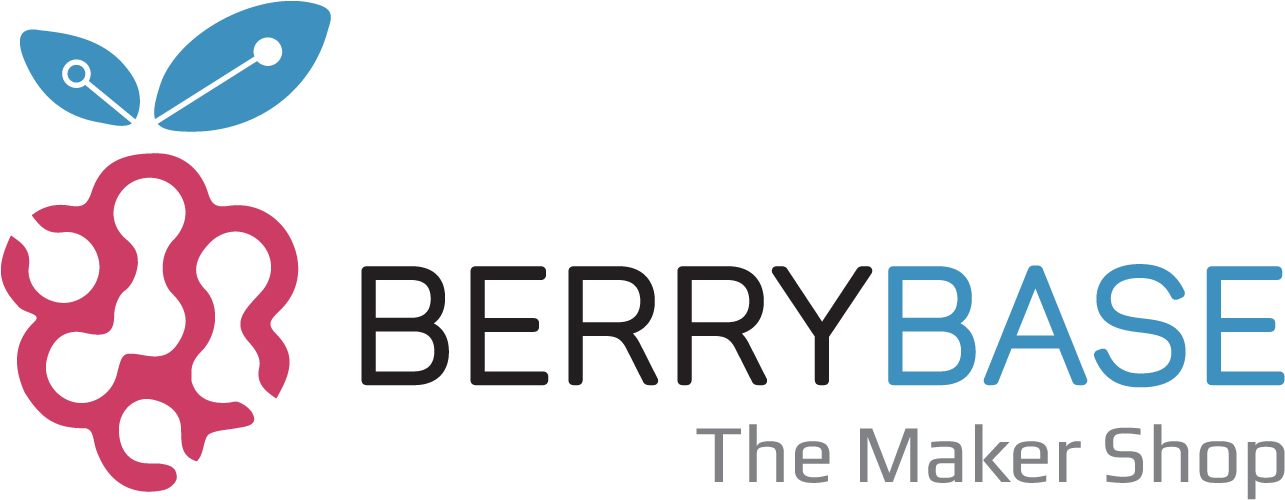No results were found for the filter!
Der SparkFun Qwiic BMP581 Drucksensor ist ein absoluter Drucksensor in Standardgröße (1 Zoll x 1 Zoll) von Bosch Sensortec. Der BMP581 zeichnet sich durch eine außergewöhnliche Auflösung (bis zu 1/64Pa) und Genauigkeit aus, während die Linearisierung und Temperaturkompensation auf dem Chip beibehalten wird, um echte absolute Daten für Druck und Temperatur zu liefern. Der Qwiic Drucksensor kommuniziert standardmäßig über I2C und nutzt unser praktisches Qwiic Connect System, so dass keine Lötarbeiten erforderlich sind, um ihn mit dem Rest Ihrer Platinen zu verbinden. Dennoch haben wir die I2C-Signale an eine Reihe von...
Article no.: SEN-20170
Müssen Sie den Luftstrom in Ihrem Rechenzentrum oder um Ihre Server herum im Auge behalten? Wie wäre es, wenn Sie sich vergewissern, dass Ihre HVAC- und Luftsteuerungssysteme mit voller Kapazität arbeiten? Oder wie wäre es, wenn Sie herausfinden könnten, wie schnell Ihr RC-Flugzeug fliegt? Nun, der neue SparkFun FS3000 Air Velocity Sensor Breakout kann Ihnen bei all dem und mehr helfen! Es ist super einfach, super schnell (Qwiic!) anzuschließen und macht super viel Spaß damit zu spielen.
Article no.: SEN-18377
Article no.: ADA5046
Messen Sie den Flüssigkeits-/Wasserdurchfluss für Ihr Solar-, Computerkühlungs- oder Gartenprojekt mit diesem praktischen, einfachen Durchflussmesser mit einem vollständig durchsichtigen Kunststoffgehäuse. Dieser Sensor wird in die Wasserleitung eingebaut und misst mithilfe eines Flügelradsensors, wie viel Flüssigkeit durch die Leitung geflossen ist. Am Flügelrad ist ein kleiner Magnet befestigt, und auf der anderen Seite des Kunststoffrohrs befindet sich ein magnetischer Hall-Effekt-Sensor, der messen kann, wie viele Umdrehungen das Flügelrad durch die Kunststoffwand gemacht hat. Auf diese Weise bleibt der Sensor sicher und trocken.
Article no.: ADA5066
Dies ist ein berührungsloser Wasser-/Flüssigkeitspegelsensor für Arduino. Es nutzt eine fortschrittliche Signalverarbeitungstechnologie mit einem leistungsstarken Chip (XKC-Y25-T12V), der mit hoher Geschwindigkeit arbeitet, um den Flüssigkeitsstand berührungslos zu erfassen. Da das Modul nicht mit der Flüssigkeit in Berührung kommt, eignet es sich für gefährliche Anwendungen wie die Erkennung von giftigen Substanzen, starken Säuren, starken Laugen und allen Arten von Flüssigkeiten in einem luftdichten Behälter unter hohem Druck.
Article no.: SEN0204
Der SparkFun Qwiic BMP581 Drucksensor ist ein Absolutdrucksensor im Mikroformat von Bosch Sensortec. Der BMP581 bietet eine außergewöhnliche Auflösung und Genauigkeit (bis zu 1/64Pa) und nutzt die On-Chip-Linearisierung und Temperaturkompensation, um echte absolute Daten für Druck und Temperatur zu liefern. Diese Version des BMP581 Drucksensors hat den bisher kleinsten Qwiic-Formfaktor, den Qwiic Micro. Diese Breakouts messen nur 0.75in. x 0.30in., so dass Sie diese Sensoren in Projekten mit außergewöhnlich engen Platzverhältnissen installieren können.
Article no.: SEN-20171
Dieser berührungslose kapazitive Flüssigkeitsstandssensor verwendet ein flexibles Substrat mit einem leichten und dünnen Design. Mit dem temperaturbeständigen und wasserfesten 3M-Klebeband auf der Rückseite lässt er sich leicht auf Oberflächen von nicht leitenden Behältern mit einer Dicke von weniger als 5 mm anbringen.
Article no.: SEN0508
Dieser Absolutdrucksensor, ST LPS22HB (auch bekannt als LPS22) kann den Luftdruck schnell und einfach messen, was nützlich ist, wenn Sie etwas über das Wetter wissen wollen (befinden wir uns in einem Tiefdruck- oder Hochdrucksystem?) oder um die Höhe zu bestimmen, da die Luft dünner wird, je höher wir über den Meeresspiegel kommen. Auf Meereshöhe beträgt der offizielle Luftdruck beispielsweise 1013,25 hPa.Sie können mit diesem Sensor den aktuellen Luftdruck an dem Ort messen, an dem Sie sich gerade befinden zum Vergleich.
Article no.: ADA4633
Article no.: GY-87
Article no.: SE-101020252
Manchmal müssen Sie den Druck in einer feuchten oder ätzenden Umgebung messen. Und manchmal müssen Sie sowohl die relativen Druckänderungen als auch den Absolutdruck kennen. Für die Zeiten, in denen Sie beides (oder beides) benötigen, ist der LPS33HW der richtige Drucksensor für Sie. Dieser Sensor kombiniert den Schutz vor eindringendem Wasser mit der Unterstützung von hochpräzisen relativen und absoluten Messungen und erfüllt damit alle Ihre Anforderungen. Mit Treibern für CircuitPython, Arduino und Raspberry Pi und Unterstützung für I2C oder SPI (Arduino unterstützt vorerst nur SPI) können Sie im Handumdrehen...
Article no.: ADA4414
Article no.: PIM411
Wie hoch sind Sie im Moment? Wenn Sie einen präzisen Höhensensor hätten, wüssten Sie es ganz genau! Der DPS310 Sensor von Infineon ist ein hochpräziser barometrischer Sensor, perfekt für die Messung von Höhenänderungen mit einer Genauigkeit von bis zu ±0,002 hPa (oder ±0,02 m) im Hochpräzisionsmodus und ± 1 hPa absoluter Genauigkeit. Das bedeutet, dass Sie Ihre absolute Höhe mit 1=Meter Genauigkeit kennen, wenn Sie den Druck auf Meereshöhe einstellen, und Höhenänderungen mit bis zu 2 cm Genauigkeit messen können. Das macht ihn zu einem großartigen Sensor für den Einsatz in Drohnen oder anderen...
Article no.: ADA4494
Article no.: PI3G-688
Bosch ist führend bei barometrischen Drucksensoren - jetzt haben wir die nächste Generation, den Adafruit BMP390L (wir nennen ihn BMP390) Precision Barometric Pressure and Altimeter Breakout. Wie zu erwarten, ist dieser Sensor ähnlich wie die früheren Versionen, abernoch besser. Der BMP390L hat eine bessere Präzision als je zuvor, was ihn hervorragend für Umweltmessungen oder als Präzisionshöhenmessermacht. Er kann sogar sowohl in I2C- als auch in SPI-Konfigurationen verwendet werden.
Article no.: ADA4816
Viewed

































